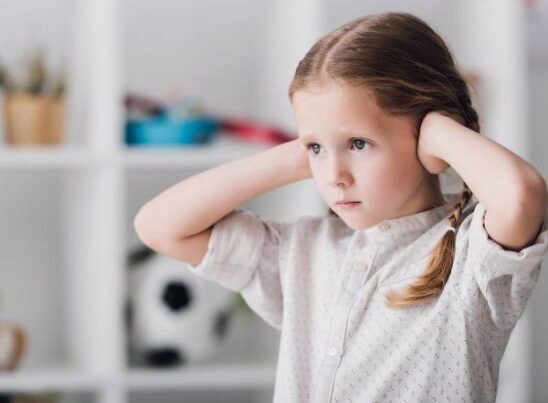Autism, also referred to as autism spectrum disorder (ASD),
is a neurological condition that has a major impact on social interaction and communication. The term “autism spectrum” refers to the large range of symptoms that make up autism and vary in degree and presentation.
People with autism each have different skills and struggles. It is necessary to comprehend this complexity in order to offer help and intervention that works. The primary features of autism are covered in this article, along with information on types, causes, therapies, support systems, and the most recent statistics and awareness-raising statistics.
Which signs correspond with autism?
There are three primary categories of autism symptoms: difficulties with social interaction,
repetitive activities, and communication issues. All of a person life, these symptoms can
persist, but they typically start in early childhood, frequently before the age of three.
-Communication difficulties: People with autism spectrum disorders may exhibit
delayed speech development, atypical speech patterns (pretending to be the other person in a discussion by saying things like “Albert wants to eat” instead of “I want to eat”), or no spoken language at all. There can also be a lack of good nonverbal cues from you, such gestures, eye contact, and facial emotions. They might struggle with language
comprehension and usage in social situations, which makes it difficult for them to converse with you and pick up on subtleties like humor or sarcasm.
– Difficulties with social interaction: Autism has an impact on the capacity to establish and sustain relationships. It might be challenging for certain people to identify and react to social cues, which makes interpersonal communication challenging. They may appear to be less interested in socializing with their friends and to favor solitary pursuits. A peculiar sensitivity to loud noises or other sensory stimulation may also be
displayed by some.
– Habits: One of the main indicators of autism is repetitive behavior. Routines and rituals, strong concentration on a particular interest, and repetitive motions (such flapping the hands) are examples of these behaviors. As these behaviors offer comfort and consistency in an unfamiliar and perplexing setting, your autistic child will fiercely
oppose any attempts by you to intervene and modify his pattern.
Which kinds of autism are there?
Over time, classifications for autism have changed. The fifth edition of the Diagnostic and Statistical Manual of Mental Disorders (DSM-5) contains the current diagnostic framework; it does not distinguish between subtypes of autism, such as Asperger syndrome, infantile disintegrative disorder, and pervasive developmental disorder-not otherwise specified. Rather, it encompasses these ailments under the general heading of “autism spectrum disorder”.
This step identifies a broad spectrum of symptoms, and the range of severity associated with them.
What factors contribute to autism?
Research points to a possible hereditary and environmental component combination, yet the
exact origins of autism are still unknown.
Genetic factors: Numerous investigations have linked autism to genetic alterations and mutations. Your child may exhibit the distinctive symptoms of autism as a result of several hereditary variables that impact brain development and function.
Environmental factors: These also have an impact, particularly throughout the development of the fetus. A higher risk of autism has been associated with a number of circumstances, such as advanced parental age, prenatal exposure to specific drugs, problems during pregnancy or childbirth, and infections during pregnancy.
Are autism symptoms curable?
Many interventions can greatly enhance the quality of life for people with autism and them families, despite the fact that there is no known cure for the condition.
– Interventions Behavioral: One of the most popular and successful therapies for autism is Applied Behavior Analysis (ABA). With the use of reinforcement techniques, it focuses on enhancing particular behaviors like social, communicative, and adaptive learning abilities.
-Support for Education: For your autistic child, individualized education plans, or IEPs are crucial. These programs offer individualized education and support in a school environment, tailored to each child requirements.
-Speech and occupational therapy: These treatments focus on the unique communication and everyday living skills difficulties that your kid is facing. While occupational therapy concentrates on the integration of motor skills and senses, speech therapy aids in the development of language and communication.
-Medication: While there is no known treatment for autism, several drugs can help control your child symptoms, such as anxiety and despair. Under the guidance of a medical professional, these drugs ought to be taken in addition to behavioral therapy.
How do you provide autism assistance for your child?
Helping people with autism necessitates a thorough, individualized strategy that considers them particular advantages and disadvantages. These are a few tactics:
-Early intervention: Improving results requires early diagnosis and intervention.
Early therapies can lessen the intensity of symptoms and aid in your child development
of fundamental abilities.
-Support for the family: In order to properly care for and comprehend their loved
ones with autism, families of those who have the condition require information and
assistance. Counseling and support groups can be very helpful in this.
Inclusive Environments: Fostering inclusive environments in businesses, educational institutions, and local communities helps people with autism feel appreciated and welcomed. Modifications like adjustable timetables can have a significant impact.
-Social skills development: Programs that teach social skills can support your
autistic child in navigating social situations and forming deep connections. Role-playing
and other interactive approaches are frequently used in these applications.
Statistics about autism.
People with autism are affected globally, yet prevalence rates vary. The Centers for Disease
Control and Prevention (CDC) estimate that 1 in 54 American children receives a diagnosis of
autism. Over the past few decades, there has been an increase in the prevalence of autism,
which may be related to better diagnostic techniques and raised awareness. Approximately four
times as many boys as girls receive an autism diagnosis; however, the reasons for this gender
difference remains unclear.
Study and consciousness
The field of autism research is still expanding, which will help us better understand and manage your child condition. Current research has concentrated on finding genetic markers, the function of the gut-brain axis, and creating novel treatment strategies.
– Scientific Progress in Genetics: Numerous genes linked to autism have been
found, opening the door to possible specialized therapies and individualized programs.
– Studies on neurobiology: Producing therapies that work for your child requires a thorough understanding of the brain causes of autism. The brain structure and function of people with autism vary, according to studies employing neuroimaging techniques. The general public acceptance and support for people with autism have grown as a result of increased awareness and advocacy initiatives.
-Awareness-building and inclusivity-promoting campaigns, including World Autism Awareness Day, and the work of groups like Autism Speaks, have been indispensable.
In conclusion:
A complicated and multidimensional condition, autism spectrum disorder has a wide range of effects on both the individual and their family. Comprehending the signs, origins, and remedies is crucial for delivering efficient assistance and enhancing the quality of life for individuals impacted. It is crucial to carry out more study and spread awareness in order to increase us understanding and create a more accepting society for people with autism. Please do not hesitate to get in touch with us if you are the parent of an exceptional child. Your children
mental health should come first.
Websites related to the article
British Psychological Society: https://www.bps.org.uk/
National Health Service (NHS): https://www.nhs.uk/
American Psychological Association (APA): https://www.apa.org/
Britmed Healthcare: https://britmedhealthcare.co.uk/
Nightingale Hospital: https://www.nightingalehospital.co.uk/




